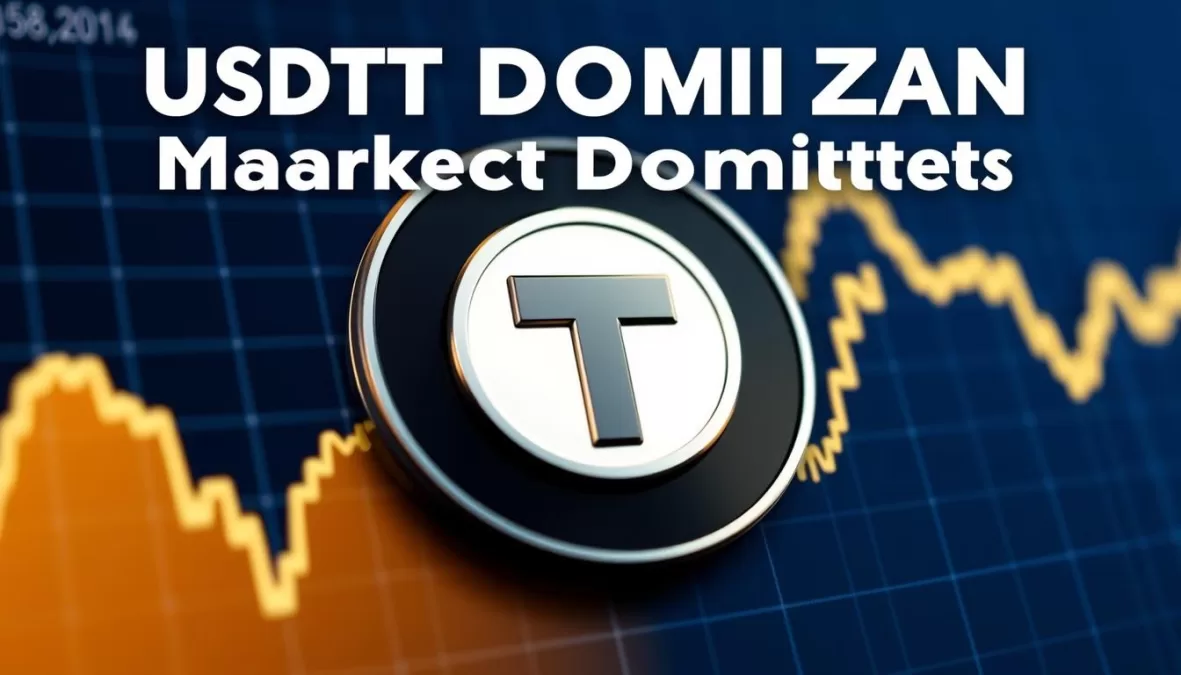The financial landscape is undergoing a significant transformation with the advent of stablecoins, offering a stable alternative to the volatility often associated with cryptocurrencies. As we navigate through 2025, the crypto market is witnessing a diverse array of stablecoins, each boasting unique features and advantages tailored to different use cases.
These digital assets are designed to maintain a stable value, thereby attracting both retail and institutional investors. The stability offered by these coins is crucial for various financial operations, including trading, payments, and as a store of value.
Key Takeaways
- Stablecoins provide a stable alternative to volatile cryptocurrencies.
- The diversity of stablecoins in 2025 offers unique features for different use cases.
- Understanding stablecoins is crucial for navigating the crypto market.
- Stablecoins maintain their stability through various mechanisms.
- They are attractive to both retail and institutional investors.
Understanding Stablecoins in the Crypto Landscape
As the cryptocurrency market continues to evolve, stablecoins have emerged as a crucial component, offering stability in a volatile landscape. The concept of stablecoins has revolutionized the way we perceive digital assets, providing a reliable store of value and medium of exchange within the blockchain ecosystem.
What Are Stablecoins and Why They Matter
Stablecoins are a type of cryptocurrency designed to maintain a stable value relative to a fiat currency, typically the US dollar. They matter because they provide a low-volatility entry point into the crypto market, allowing users to hedge against the risks associated with other cryptocurrencies. By maintaining a stable value, stablecoins facilitate various financial applications, including lending, borrowing, and payments, thereby increasing their adoption among users and financial institutions.
The Evolution of Stablecoins Since Their Inception
The first notable stablecoin, Tether (USDT), was launched in 2014, marking the beginning of a new era in the crypto space. Since then, stablecoins have undergone significant changes, with the introduction of new collateralization models and improved transparency mechanisms. The DeFi boom of 2020 accelerated the development of more sophisticated stablecoins, including crypto-backed and algorithmic models. Today, stablecoins are more mature, with increased institutional adoption and integration with traditional financial systems, making them more accessible and trusted than ever before.
Types of Stablecoins Dominating the Market
The crypto ecosystem is supported by various stablecoin types, each with unique characteristics that cater to different user needs and preferences. The stability offered by these stablecoins is crucial for various applications within the blockchain ecosystem.
Fiat-Backed Stablecoins
Fiat-backed stablecoins are the most straightforward type, backed by traditional currencies like the US dollar. They maintain a 1:1 ratio with the underlying fiat currency, providing a stable store of value. Examples include Tether (USDT) and USD Coin (USDC), which are widely used in the crypto market for trading and as a hedge against volatility.
These stablecoins are typically issued by centralized entities and are considered reliable due to their direct backing by fiat reserves. However, they require trust in the issuer and the custodian of the fiat reserves.
Crypto-Backed Stablecoins
Crypto-backed stablecoins, on the other hand, are collateralized by other cryptocurrencies. They operate on blockchain-based smart contracts, ensuring transparency and decentralization. DAI is a prominent example, backed by Ethereum and other cryptocurrencies. The value is maintained through over-collateralization, meaning the value of the collateral is higher than the stablecoin issued.
This type of stablecoin is more complex and is subject to the volatility of the underlying crypto assets. However, they offer a decentralized alternative to fiat-backed stablecoins.
Algorithmic Stablecoins
Algorithmic stablecoins maintain their peg through automated supply adjustments controlled by algorithms and smart contracts, rather than being backed by collateral. These stablecoins expand or contract their supply in response to market demand. While they offer the promise of a truly decentralized stablecoin, they have historically faced challenges in maintaining their pegs during extreme market conditions.
- Algorithmic stablecoins adjust supply based on market demand.
- They offer a decentralized solution without collateral backing.
- Historical examples, like TerraUSD (UST), have faced significant challenges.
| Type | Backing | Decentralization | Stability Mechanism |
|---|---|---|---|
| Fiat-Backed | Fiat Currency | Low | 1:1 Fiat Reserve |
| Crypto-Backed | Cryptocurrency | High | Over-collateralization |
| Algorithmic | None | High | Algorithmic Supply Adjustment |
As the stablecoin market continues to evolve, understanding these different types is crucial for investors and users alike. Each type offers unique benefits and challenges, contributing to the overall stability and value within the crypto system and blockchain ecosystem.
The Advantages and Risks of Stablecoin Investments
Stablecoins offer a unique blend of the benefits of cryptocurrencies and the stability of traditional fiat currencies, making them an attractive investment option. As the cryptocurrency market continues to evolve, understanding the advantages and risks associated with stablecoin investments is crucial for investors.
Key Benefits of Using Stablecoins
Stablecoins provide several key benefits to investors. They offer stability in a volatile market, as their value is pegged to more stable assets such as fiat currencies or commodities. This stability makes them an attractive option for investors looking to minimize risk. Additionally, stablecoins facilitate fast and low-cost transactions, enabling efficient cross-border payments and remittances.
The use of stablecoins also enhances market liquidity and provides a reliable store of value. Furthermore, stablecoins can be used as a hedge against market downturns, allowing investors to maintain their exposure to the cryptocurrency market while reducing potential losses.
| Benefit | Description |
|---|---|
| Stability | Pegged to stable assets, reducing volatility |
| Efficient Transactions | Fast and low-cost, ideal for cross-border payments |
| Market Liquidity | Enhances liquidity and provides a reliable store of value |
Potential Risks and Challenges
Despite their benefits, stablecoins are not without risks. Centralization risks are significant for fiat-backed stablecoins, as they rely on centralized issuers who control the reserves and can potentially freeze or blacklist user funds. Additionally, there is a counterparty risk when the stablecoin issuer fails to maintain adequate reserves or faces financial difficulties, potentially leading to a loss of the peg and significant losses for holders.
- Regulatory uncertainty remains a challenge for stablecoins in many jurisdictions, with evolving frameworks potentially impacting their issuance, trading, and use cases.
- Algorithmic stablecoins face unique risks related to their stability mechanisms, which may fail during extreme market conditions or coordinated attacks on their systems.
- Even well-designed stablecoins are not immune to market risks such as liquidity shortages, sudden changes in demand, or broader crypto market contagion effects.
Investors must carefully consider these risks and challenges when investing in stablecoins. Ensuring compliance with regulatory requirements and understanding the reserves backing the stablecoin are crucial steps in mitigating potential risks.
Tether (USDT): The Pioneer Maintaining Market Dominance
Tether (USDT) has been a cornerstone of the cryptocurrency ecosystem, offering a reliable stablecoin solution. Despite concerns about its reserves, USDT remains widely used.
Market Position and Liquidity Advantages
Tether’s stablecoin, USDT, boasts significant liquidity and is widely accepted across various cryptocurrency platforms. Its market position is reinforced by its ability to facilitate smooth transactions and provide a stable store of value.
Pros and Cons of Investing in USDT
Investing in USDT has its advantages, including its high liquidity and widespread acceptance. However, concerns about transparency and the composition of its reserves have raised debates about its long-term stability.
- Tether has made efforts to improve transparency by publishing periodic attestations about its reserves.
- Despite this, critics argue that full audits are necessary for complete compliance and transparency.
Reserve Transparency and Security Measures
Tether has taken steps to address concerns about its reserves by enhancing transparency and implementing robust security measures. In 2025, Tether has further bolstered its compliance protocols to maintain user confidence and ensure stability in the market.
USD Coin (USDC): The Regulated Alternative

The USD Coin (USDC) is gaining traction as a regulated alternative to other stablecoins in the market. It is extensively used in decentralized finance (DeFi) platforms, exchanges, and payments, offering a secure and stable way to store and transfer value within the blockchain ecosystem.
Regulatory Compliance and Transparency
USDC’s regulatory compliance and transparency are key factors contributing to its growing adoption. Circle, the company behind USDC, has implemented robust reserve verification processes to ensure that the stablecoin is fully backed by the US dollar. This transparency helps build trust among users and financial institutions.
Pros and Cons of USDC for Investors
Investing in USDC offers several benefits, including stability and reduced volatility compared to other cryptocurrencies. However, it also comes with risks such as regulatory changes and potential security vulnerabilities. Investors should weigh these pros and cons before making investment decisions.
Circle’s Role in USDC’s Growing Adoption
Circle has played a pivotal role in driving USDC’s adoption through strategic partnerships with financial institutions and technology companies. The company’s focus on building compliant infrastructure has helped bridge the gap between traditional finance and the crypto ecosystem, facilitating USDC’s integration into mainstream financial services.
Some key initiatives by Circle include expanding USDC’s availability across multiple blockchains and collaborating with Coinbase through the Centre consortium. These efforts have provided USDC with strong distribution channels and technical support, accelerating its growth and adoption in 2025.
DAI (DAI): The Decentralized Stablecoin Leader
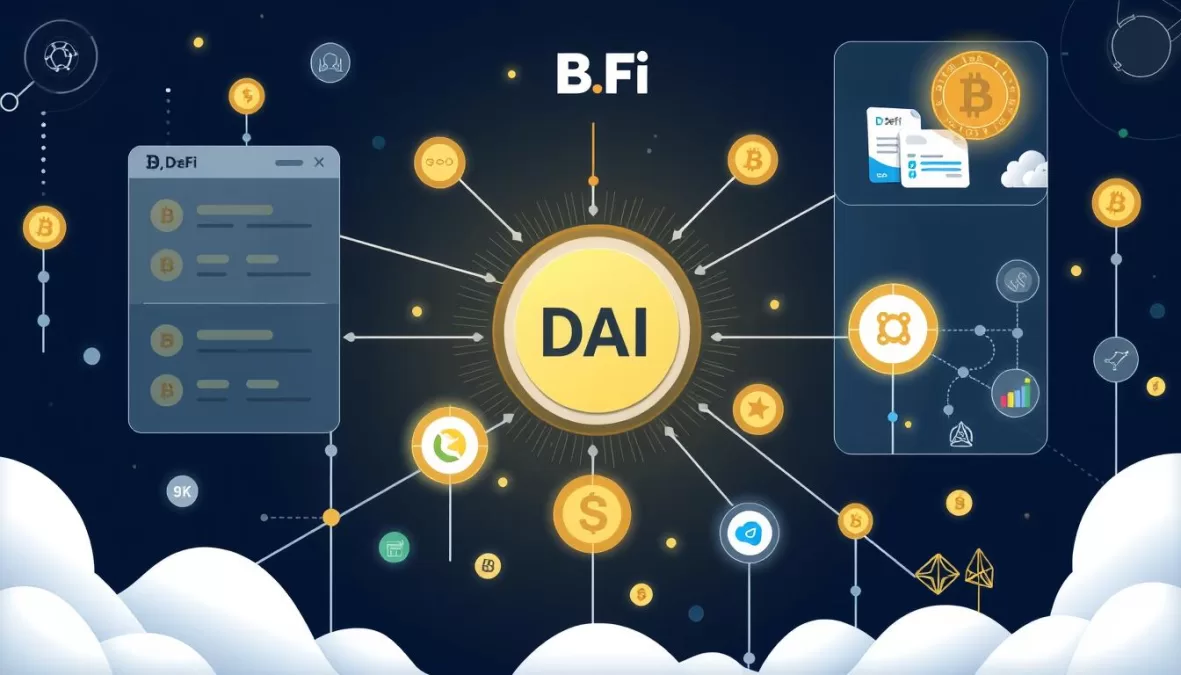
In the rapidly evolving world of cryptocurrency, DAI stands out as a leading decentralized stablecoin, maintaining its peg through innovative collateralization methods. Since its launch in 2017, DAI has become a fundamental part of the decentralized finance (DeFi) ecosystem, offering stability and flexibility to users seeking a stablecoin with a focus on decentralization.
How DAI Maintains Its Peg Through Collateralization
DAI maintains its peg through a robust collateralization mechanism, where users lock up their crypto assets in a vault to generate DAI. This process ensures that DAI remains stable and reliable, even in volatile market conditions. The MakerDAO protocol governs this mechanism, adjusting parameters as needed to maintain the peg.
Pros and Cons of DAI’s Decentralized Model
The decentralized nature of DAI offers several advantages, including trustlessness and censorship resistance. However, it also comes with challenges such as complexity in governance and potential risks associated with collateralized assets. Despite these challenges, DAI’s decentralized model aligns perfectly with the ethos of DeFi.
DAI’s Role in the DeFi Ecosystem
DAI has established itself as a cornerstone of the DeFi ecosystem, serving as a stable medium of exchange across various protocols and platforms. It is widely used in lending and borrowing platforms, allowing users to generate yield on their holdings or take out loans against their crypto assets. DAI plays a crucial role in liquidity pools on decentralized exchanges, providing stable trading pairs that reduce impermanent loss for liquidity providers.
PayPal USD (PYUSD): Mainstream Financial Integration

The introduction of PayPal USD (PYUSD) marks a significant milestone in the integration of traditional finance with decentralized finance (DeFi). It offers a bridge between these two financial systems, allowing users to interact with both using a familiar and widely accepted platform.
PayPal’s Entry into the Stablecoin Market
PayPal’s entry into the stablecoin market with PYUSD is a strategic move that leverages its vast user base and established infrastructure. By doing so, PayPal is expanding its services beyond traditional payment processing, venturing into the digital currency space.
Pros and Cons of PYUSD for Users
The PYUSD stablecoin offers several benefits to users, including the ability to make transactions seamlessly between traditional fiat currencies and the stablecoin. However, like any financial instrument, it also comes with its own set of risks and challenges that users must consider.
- PYUSD is deeply integrated with PayPal’s existing payment infrastructure, allowing for seamless payments between traditional fiat currencies and the stablecoin.
- Users can easily purchase, hold, and transfer PYUSD directly within their PayPal accounts, eliminating the need for external wallets or exchanges.
- The stablecoin leverages PayPal’s robust security system, making it accessible to users who may be new to cryptocurrencies.
- PayPal’s merchant network provides PYUSD with potential real-world utility, as businesses that accept PayPal can potentially accept the stablecoin for payments.
- This integration with an established payment system has helped accelerate PYUSD’s adoption, particularly among mainstream users who prioritize convenience and familiarity.
Integration with PayPal’s Existing Infrastructure
PYUSD’s integration with PayPal’s existing infrastructure is a key factor in its potential success. By allowing users to manage PYUSD within their PayPal accounts, the stablecoin is made more accessible, thereby encouraging its adoption.
TrueUSD (TUSD): The Transparency-Focused Option
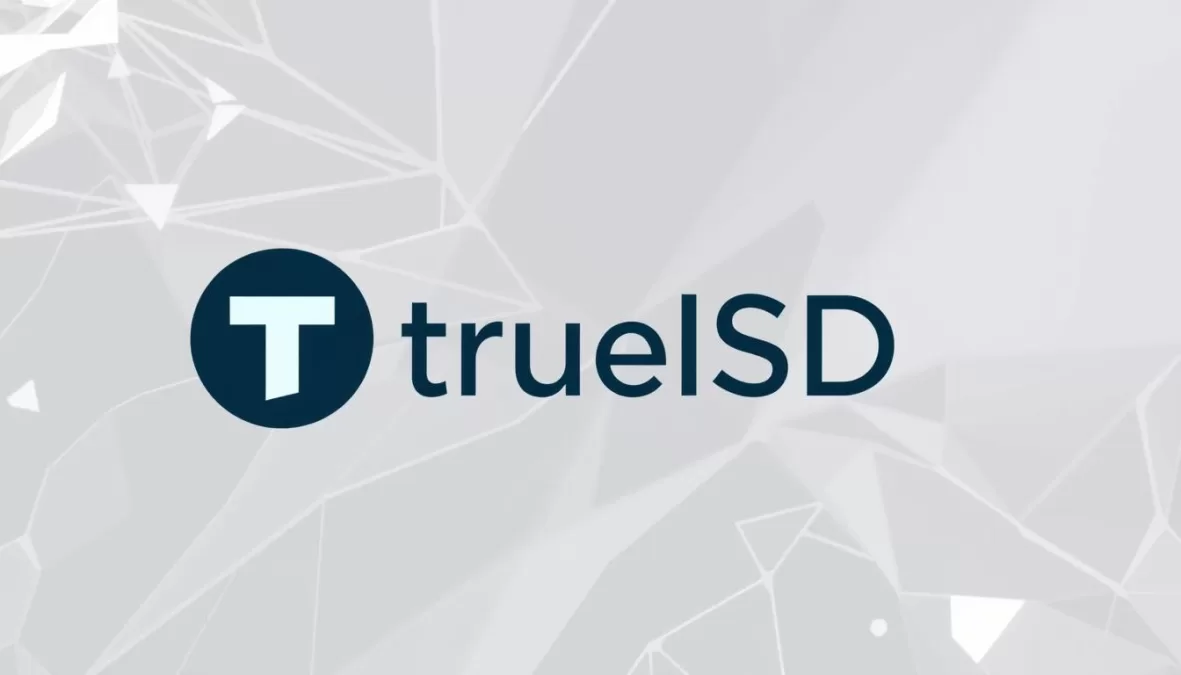
In the realm of stablecoins, TrueUSD (TUSD) stands out for its commitment to transparency. TUSD aims to combine the benefits of blockchain technology with the stability of fiat currencies, making it an attractive option for users seeking a dependable stablecoin for trading and payments.
Reserve Verification
TUSD’s approach to reserve verification is a cornerstone of its transparency. The stablecoin undergoes regular audits to ensure that it is fully backed by its reserves. This process involves independent third-party verification, providing an additional layer of trust for its users.
Pros and Cons
TrueUSD offers several advantages, including its high transparency and regulatory compliance. However, it also faces challenges such as competition from other stablecoins and the need for continuous innovation to maintain its market position.
Market Position and Adoption
TUSD has established a solid position in the stablecoin market, particularly among users who prioritize transparency. It has gained significant adoption in Asian markets, where it is used as a trading pair on major exchanges. As the crypto market evolves, TUSD continues to expand its presence through strategic partnerships.
With its focus on transparency and trust, TrueUSD is poised to remain a significant player in the stablecoin market. Its ability to adapt to changing market conditions and user needs will be crucial in maintaining its competitive edge.
Ethena USDe (USDe): The Innovative Delta-Neutral Strategy
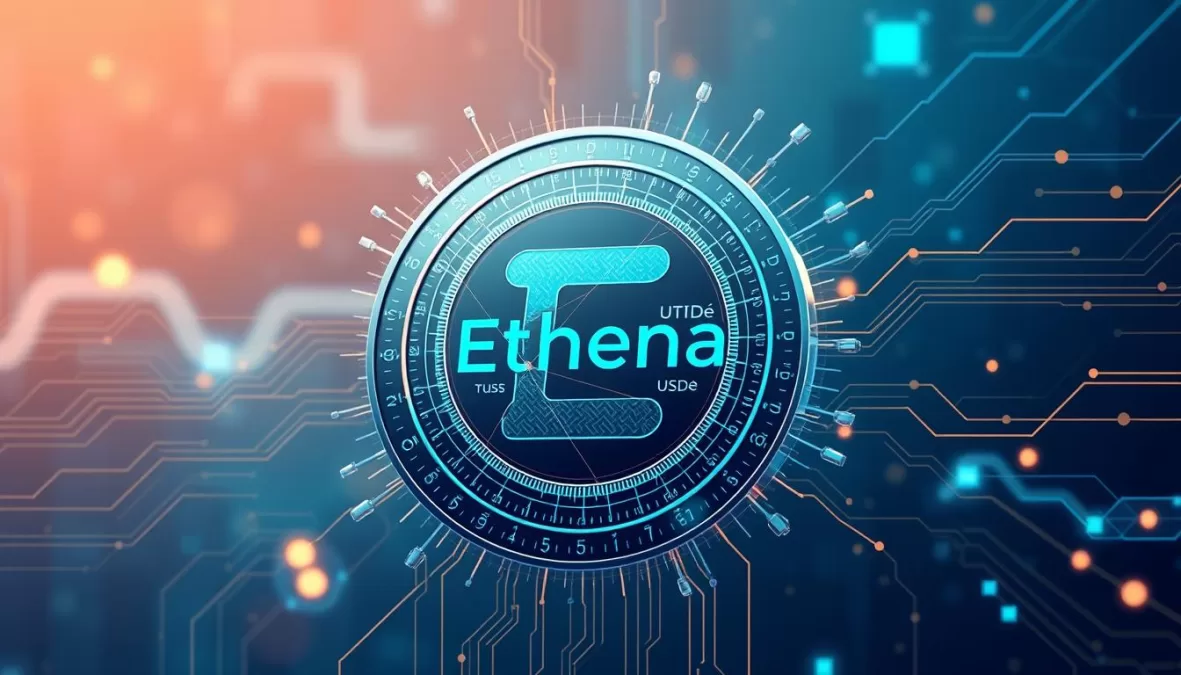
Ethena USDe is revolutionizing the stablecoin landscape with its delta-neutral strategy. This innovative approach has garnered significant attention in the DeFi ecosystem, where stability and yield generation are paramount.
How USDe’s Delta-Neutral Mechanism Works
USDe’s delta-neutral mechanism works by maintaining a balanced position between long and short exposures, thereby minimizing the impact of market volatility on the stablecoin’s value. This is achieved through a sophisticated hedging strategy that ensures stability in the crypto market.
Pros and Cons of Ethena’s Approach
Ethena’s approach offers several advantages, including enhanced capital efficiency and native yield generation capabilities, making it attractive to yield-seeking users. However, the complexity of the delta-neutral strategy may pose risks for less experienced users. Additionally, Ethena’s proactive measures, such as maintaining a reserve fund, enhance user confidence and security within the protocol.
USDe’s Growing Influence in DeFi
Since its launch, USDe has rapidly gained adoption within the DeFi ecosystem, becoming an important component in various DeFi protocols. It serves as a stable medium of exchange and collateral asset, and its influence continues to grow as more protocols integrate it and users recognize the benefits of its delta-neutral approach to stability. The protocol’s governance token, Ethena (ENA), has also fostered an engaged community participating in the system’s development.
Frax (FRAX): The Hybrid Stablecoin Solution
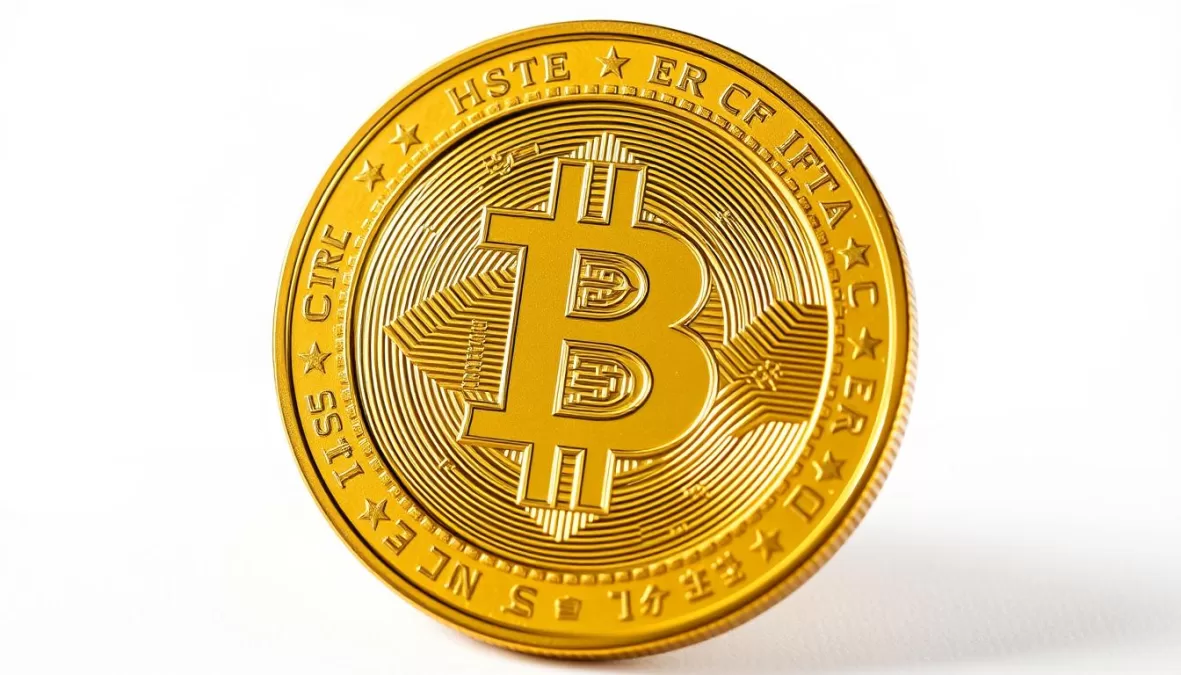
In the ever-evolving world of cryptocurrency, Frax (FRAX) stands out as a pioneering hybrid stablecoin. Unlike traditional stablecoins that rely solely on fiat currency reserves, FRAX aims to create a more flexible and efficient approach to stability, appealing to users in decentralized finance (DeFi) and beyond.
Unique Collateralization Model
FRAX’s collateralization model is a key differentiator, combining both collateralized and algorithmic elements to maintain stability. This hybrid approach allows FRAX to be more resilient to market volatility while maintaining a stable value.
The use of a mixed collateralization model enables FRAX to adapt to changing market conditions, making it an attractive option for users seeking stability in the DeFi ecosystem.
Pros and Cons of FRAX’s Hybrid Approach
The hybrid approach of FRAX offers several advantages, including increased stability and flexibility. However, it also introduces complexity, which can be a challenge for some users.
One of the main benefits of FRAX is its ability to maintain a stable peg through a combination of collateral and algorithmic adjustments, making it a reliable choice for finance and trading applications.
Ecosystem and Governance Structure
The FRAX ecosystem has expanded significantly since its launch, encompassing various financial products and services beyond the core stablecoin. Frax Finance has developed additional assets like Frax Price Index (FPI) and Frax Shares (FXS), the protocol’s governance token.
The governance structure is built around FXS token holders, who can vote on key protocol parameters, ensuring a decentralized and community-driven approach to managing the FRAX ecosystem.
Pax Dollar (USDP): The Regulated Stability Option
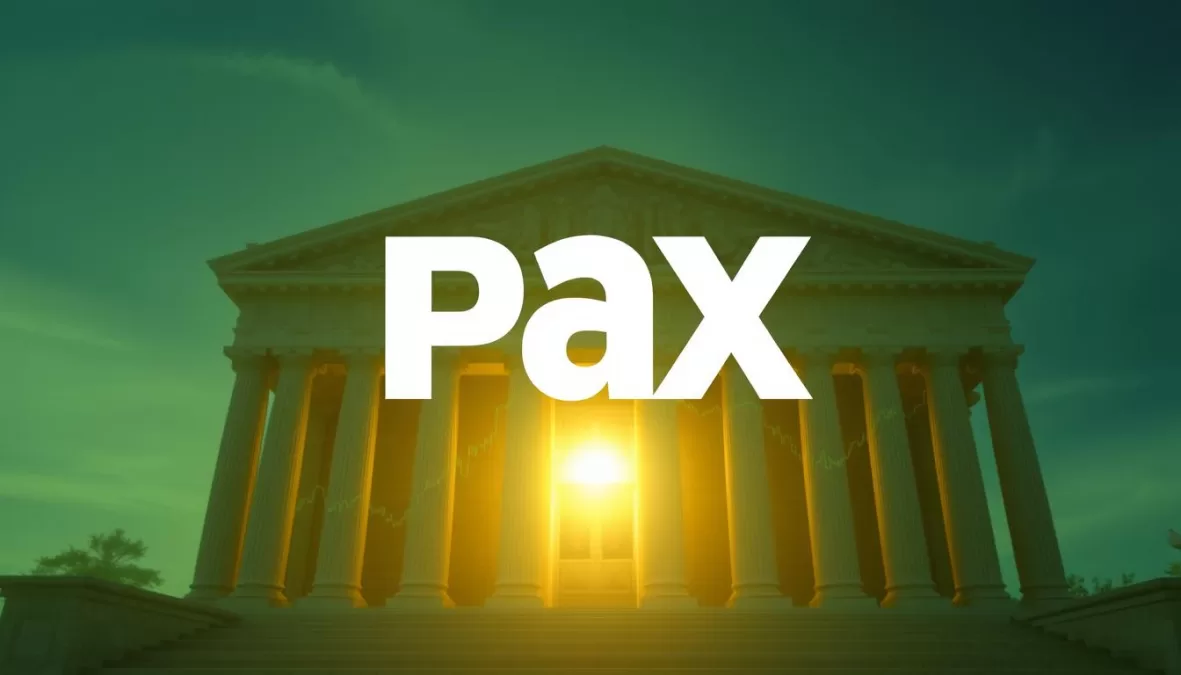
As the demand for stablecoins continues to grow, Pax Dollar (USDP) offers a transparent and regulated alternative. USDP has established a solid position in the stablecoin market as a reliable option, particularly appealing to institutional users and those concerned with compliance.
Regulatory Framework and Compliance
USDP operates within a robust regulatory framework, ensuring compliance with financial regulations. This framework provides users with a high level of security and trust, making USDP an attractive option in the stablecoin market. The regulatory compliance also facilitates its adoption across various financial platforms.
Pros and Cons of Pax Dollar
The advantages of USDP include its transparency and regulatory compliance, which enhance user trust. However, like any stablecoin, it faces challenges such as competition from other established stablecoins. Key benefits include:
- High level of transparency and regulatory compliance
- Strong backing from Paxos, enhancing its reliability
- Integration with various exchanges and financial services
Despite these advantages, USDP’s market share is smaller compared to giants like USDT and USDC.
Market Position and Future Outlook
USDP has carved out a niche as a trusted, regulated stablecoin. Looking ahead, it is well-positioned to benefit from increasing institutional adoption and growing regulatory clarity in the digital asset space. Paxos continues to develop new use cases and partnerships for USDP, potentially expanding its role in cross-border payments and traditional finance integration.
Angle Protocol’s Stablecoins: USDA and EURA

In the evolving landscape of cryptocurrency, Angle Protocol’s stablecoins, USDA and EURA, are gaining significant traction. These stablecoins are designed to provide stability and innovative yield-generating features, making them attractive to users in the crypto market.
USDA: Innovative Yield-Generating Features
USDA is one of Angle Protocol’s flagship stablecoins, offering users a unique opportunity to earn yield while maintaining the stability of a stablecoin. This is achieved through a sophisticated mechanism that ensures the stablecoin remains pegged to its underlying asset while generating returns for users. As a result, USDA has become a popular choice among users looking for a reliable and profitable stablecoin.
EURA: The Leading Euro Stablecoin
EURA has emerged as the most traded Euro stablecoin in Europe, providing a stable solution for transactions in fiat currency. As the European crypto market matures, EURA has become the preferred choice for users who primarily transact in Euros, helping them avoid currency conversion costs. EURA maintains its peg through a mechanism similar to USDA, ensuring stability while offering potential yield opportunities. Its success demonstrates the growing demand for region-specific stablecoins that cater to local currencies beyond the US dollar-dominated market.
The adoption of EURA among European businesses, exchanges, and DeFi protocols has been significant, making it an essential part of the European crypto ecosystem. With its focus on transactions and stability, EURA is poised to continue its growth trajectory in the coming years.
Top 10 Stablecoins Gaining Traction in 2025: Comparative Analysis
In 2025, the top 10 stablecoins are vying for dominance in a rapidly evolving market. As the stablecoin landscape continues to expand, understanding the differences between these prominent players is crucial for investors and users alike.
Market Capitalization and Trading Volume Comparison
The market capitalization and trading volume of stablecoins are key indicators of their stability and user trust. As of 2025, Tether (USDT) remains one of the leading stablecoins in terms of market capitalization, followed closely by USD Coin (USDC). The trading volumes of these stablecoins have also seen significant activity, with DAI and FRAX showing notable growth due to their decentralized and hybrid models, respectively.
A comparative analysis reveals that while some stablecoins excel in market capitalization, others lead in trading volume. For instance, USDC has seen a substantial increase in trading volume due to its regulatory compliance and transparency. On the other hand, DAI has maintained a strong market capitalization due to its decentralized governance model through MakerDAO.
Transparency and Reserve Backing Comparison
Transparency and reserve backing are critical factors in assessing the reliability of stablecoins. TrueUSD (TUSD) and Pax Dollar (USDP) have been at the forefront of transparency, with regular audits and clear reserve backing disclosures. In contrast, some stablecoins have faced scrutiny over their reserve backing and transparency practices.
The comparison highlights a diverse landscape, with some stablecoins like USDP operating under strict regulatory frameworks, ensuring high levels of transparency and compliance. Others, like Ethena USDe, have introduced innovative approaches to maintaining transparency through their delta-neutral mechanism.
Decentralization and Governance Comparison
The governance models of stablecoins vary significantly, ranging from fully centralized to highly decentralized systems. DAI leads the decentralization rankings with its fully on-chain governance through MakerDAO, where MKR token holders vote on all aspects of the protocol’s operation and development.
- FRAX implements a hybrid governance model, balancing decentralization with operational efficiency.
- Fiat-backed stablecoins like USDC, USDT, and PYUSD operate under centralized governance models.
- Ethena USDe has implemented a progressive decentralization roadmap, gradually transferring control to token holders.
The governance comparison reveals a spectrum of models, each offering trade-offs between efficiency, security, and community control. As the stablecoin ecosystem continues to evolve, the importance of robust governance models cannot be overstated.
Stablecoins in DeFi: Expanding Use Cases
DeFi applications are increasingly leveraging stablecoins for various financial use cases. Stablecoins provide the stability and reliability needed for a wide range of DeFi services, from lending and borrowing to yield farming and cross-border payments.
Lending and Borrowing Applications
Stablecoins have become a cornerstone in DeFi lending and borrowing platforms. They enable users to participate in lending protocols, earning interest on their holdings, while borrowers can use stablecoins to take out loans with predictable repayment terms. This has created a more stable and reliable lending environment.
- Lending protocols offer competitive interest rates for stablecoin deposits.
- Borrowers benefit from stable loan repayment schedules.
- Reduced volatility attracts more participants to lending platforms.
Yield Farming and Staking Opportunities
Stablecoins are also integral to yield farming and staking strategies in DeFi. By providing liquidity to DeFi protocols, users can earn rewards in the form of additional stablecoins or other tokens. This has incentivized the use of stablecoins in various yield-generating activities.
Key benefits include:
- Incentivizing liquidity provision through rewards.
- Allowing users to diversify their yield-generating strategies.
- Enhancing the overall liquidity of DeFi markets.
Cross-Border Payments and Remittances
Stablecoins have revolutionized cross-border payments and remittances by enabling near-instant, low-cost transactions that bypass traditional banking systems and their associated delays and fees. Migrant workers can now send money home using stablecoins, significantly reducing remittance costs.
Businesses engaged in international trade increasingly use stablecoins for settlements, eliminating the need for currency conversion and reducing exposure to exchange rate fluctuations. Payment platforms like PayPal have integrated their stablecoins (PYUSD) into their existing infrastructure, making cross-border stablecoin payments accessible to mainstream users.
The Regulatory Landscape for Stablecoins in 2025
The regulatory environment for stablecoins in 2025 is characterized by a mix of converging global standards and diverse regional approaches. As stablecoins continue to play a significant role in the financial landscape, regulatory bodies worldwide are adapting to address the challenges they pose.
United States Regulatory Framework
In the United States, the regulatory framework for stablecoins is evolving, with a focus on enhancing compliance and ensuring the stability of these digital assets. Regulatory bodies such as the SEC and the Federal Reserve are working together to establish clear guidelines for stablecoin issuers.
The approach includes stricter reserve requirements and enhanced transparency measures to protect consumers and maintain financial stability.
European Union’s MiCA Regulation Impact
The European Union’s Markets in Crypto-Assets (MiCA) regulation is set to have a significant impact on the stablecoin market. MiCA aims to provide a comprehensive regulatory framework for crypto-assets, including stablecoins, focusing on consumer protection, market integrity, and financial stability.
Stablecoin issuers will need to comply with stringent requirements, including maintaining adequate reserves and ensuring transparency in their operations.
Global Regulatory Trends and Compliance Requirements
Globally, regulatory trends are converging around key principles such as reserve requirements, transparency, and consumer protection. International bodies like the Financial Stability Board (FSB) and the Bank for International Settlements (BIS) are developing standards that many jurisdictions are adopting.
| Region | Regulatory Approach | Key Requirements |
|---|---|---|
| United States | Enhanced compliance and stability focus | Stricter reserve requirements, transparency |
| European Union | Comprehensive MiCA regulation | Consumer protection, market integrity, financial stability |
| Global | Converging standards | Reserve requirements, transparency, consumer protection |
As the regulatory landscape continues to evolve, stablecoin issuers and users must stay informed about the changing requirements to ensure compliance and navigate the complex global regulatory environment effectively.
Future Outlook: Where Stablecoins Are Headed
As we look ahead to 2025, the stablecoin landscape is poised for significant evolution. The increasing adoption of stablecoins is driving growth and innovation in the financial sector.
Institutional Adoption Trends
Institutional investors are increasingly turning to stablecoins as a reliable store of value and medium of exchange. Major financial institutions are integrating stablecoins into their services, offering seamless on-ramps and off-ramps that simplify the transition between traditional finance and the crypto ecosystem.
- Banking services are being built around stablecoins, including interest-bearing accounts and lending products.
- Payment networks are incorporating stablecoins, enabling merchants to accept stablecoin payments without needing to understand the underlying technology.
Technological Innovations on the Horizon
The future of stablecoins will be shaped by technological advancements, particularly in the areas of security, scalability, and interoperability. Central banks are developing frameworks for interoperability between private stablecoins and central bank digital currencies (CBDCs), creating a more integrated digital currency ecosystem.
Integration with Traditional Finance
The line between traditional banking and stablecoin services is blurring, with hybrid models emerging that combine the best aspects of both systems. This integration is expected to drive further adoption and innovation in the stablecoin market.
| Trend | Description | Impact |
|---|---|---|
| Institutional Adoption | Major financial institutions integrating stablecoins into their services. | Increased adoption and growth. |
| Technological Innovation | Advancements in security, scalability, and interoperability. | Enhanced user experience and expanded use cases. |
| Integration with Traditional Finance | Hybrid models combining traditional banking with stablecoin services. | Increased efficiency and innovation. |
Conclusion
Stablecoins have transitioned from a niche product to a fundamental building block of the digital asset ecosystem. As we look at the landscape in 2025, it’s clear that these stablecoins have become essential for providing stability in a notoriously volatile crypto market.
The diversity of stablecoin options available today allows users to make an informed choice based on their priorities, whether it’s stability, value preservation, regulatory compliance, decentralization, yield generation, or transaction efficiency. This variety is crucial for investors looking to navigate the complex digital asset space.
While established players like Tether (USDT) and USD Coin (USDC) continue to dominate the market, innovative newcomers such as Ethena USDe, PayPal USD, and Angle’s USDA are reshaping the landscape. These newcomers bring new approaches to stability and utility, expanding the potential use cases for stablecoins.
- The regulatory environment has matured, providing clearer guidelines for issuers and enhancing user protection.
- As stablecoins bridge the gap between traditional finance and the crypto ecosystem, their importance is likely to grow.
- For investors and users, understanding the unique features, benefits, and risks of different stablecoins is crucial for making informed decisions.
In conclusion, as the market continues to evolve, stablecoins are poised to play a pivotal role in shaping the future of digital finance. Their ability to offer value and stability makes them an attractive choice for a wide range of users.

